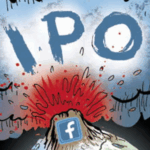 “Brand Aware” explores the data-driven digital ad ecosystem from the marketer’s point of view.
“Brand Aware” explores the data-driven digital ad ecosystem from the marketer’s point of view.
Today’s column is written by Paolo Provinciali, head of global ecommerce marketing at Anheuser-Busch InBev.
Brand marketers are good storytellers but often bad at driving consumer action. This wasn’t as troubling when content consumption was more linear with fewer stimuli; brand awareness could survive until a delayed moment of purchase. But consumer behavior has changed, and marketers need to adapt.
A few years ago, a sensationalistic headline declared average consumer attention has decreased below that of a goldfish. The truth is that modern-day consumers have increased their multitasking ability, allowing quicker responses to temporary stimuli. We have developed skills for quickly skimming content to assess its relevance while retaining information for shorter periods of time. Consumers have developed a superpower called “banner blindness.” It also manifests in the urge to pull out the phone during TV commercial breaks.
Brand marketers respond by producing broadly entertaining content, hoping a small portion of consumers will retain association with the brand, generating sales. But in producing attention-grabbing content, companies compromise their product-centric messages and limit their impact. Decreased effectiveness requires increased frequency through additional spending. The cycle is unsustainable and suggests the need for a different approach.
Another important consumer behavior change is that we now live in an on-demand world. The time between awareness, desire and reward is reduced to an instant. Netflix releases all episodes of its original series simultaneously, allowing for binge-watching on day one.
Amazon Prime has 100 million US subscribers who will not wait more than two days for package delivery. Uber Eats allows any food to be delivered within an hour. In neurology, there is a saying that “neurons that fire together wire together.” Our brain literally rewires itself to accept new stimuli as the norm and react more quickly. The new norm is the shortened time frame between awareness, desire and reward.
Brand marketers have an opportunity to leverage this new norm to their advantage by following several best practices from the performance marketer’s playbook.
Obsess about the context
As consumers adeptly filter out uncontextualized content, brand marketers must carefully develop content specific to the moment and channel.
Performance marketers leverage signals of intent. Brand marketers can contextualize by religiously performing context mapping of their target audience and develop specific content tailored to different consumption situations.
Focus on fewer channels
While performance advertisers specialize in mastering few channels, brand marketers try to maximize reach by developing universal content. Unfortunately, this only allows for generic targeting and average creatives.
Narrowing focus to fewer channels produces excellent content that will break through.
Decide what comes next
No consumer touch point should be a dead end. Brand marketers need a clear idea of consumer action after receiving the message and present an invitation to engage. This leverages the fleeting attention they just captured and drives valuable action.
Remove the barrier to do more
Marketers should think about what may hold consumers back from taking the next step.
Performance marketers tempt unsure consumers with limited-time offers, creating a sense of urgency. Brand advertisers should do the same: If they captured attention using funny content, the consumer is likely to watch more videos on the brand’s YouTube channel rather than visiting the brand site. Offering a chance to subscribe to the channel provides more entertainment while granting the marketer means to re-engage later.
Keep them hooked
Brand marketers often limit audience engagement to campaign-focused interactions. When the campaign ends, there is limited or no conversation with the consumers.
Performance marketers instead develop customer life cycle journeys via multichannel communication that keeps consumers coming back. Brand marketers should consider brand life cycle journeys to engage customers between campaigns. They should not only talk about their brand but delight consumers with entertainment, gifts (merchandise) and relevant content.
Don’t shy away from selling
Brand marketers often stigmatize asking users to buy their product, but they should instead work with their performance-focused colleagues to elevate the brand at every touch point. When brand marketers curate the entire consumer journey, you get an Apple Store. When they don’t, you get something like a used-car lot.
Successful marketers break away from the norm and transform threats into strengths. As consumer behavior evolves, the line between brand and performance marketing is disappearing. The best practitioners will be those who can successfully combine the storytelling ability of brand marketers with the action-driving skills of performance marketers.
Follow AB InBev (@abinbev) and AdExchanger (@adexchanger) on Twitter.












